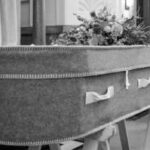“Look, I saw the real Santa when I was a kid, in 1994 in a shopping centre in Leighton Buzzard, then, a few years later I saw him again in 1998, this time in Debenhams in Luton. But it wasn’t the same Santa!” declares Bedford double glazing salesman Brian Bripp. “Sure, he had the same beard and red suit, even the same laugh, but he definitely wasn’t the same geezer I saw in 1994. For one thing, he was at least two inches shorter and walked differently. It was then that I began to suspect that the real Santa had died and been replaced by a look-a-like!” Bripp is one of a growing number of people who believe in what has become known as the ‘Santa is Dead’ conspiracy, which posits that the Christmas icon died circa 1996, but was replaced by a double, who has continued playing the role to the present day. “It stands to reason that they would have to have replaced him – imagine the trauma it would have caused to the world’s children if they learned that kindly old Father Christmas was brown bread,” contends Bripp, a leading light in the movement. “I mean, there has to be a Santa, doesn’t there? So it really should come as no surprise that they hastily drafted in a replacement for him.”
Bripp suspects that the decision to replace Santa with a double – often dubbed ‘Fanta’ by the ‘Santa is Dead’ community, until the maker of the soft drink of the same name threatened legal action – was less to do with protecting the sensibilities of young children as it was for economic reasons. “Just imagine what it would have done to Christmas sales if Santa hadn’t put in his usual seaonal appearances,” he muses. “It could have plunged the world economy into a massive depression. Of course, they could have tried to promote some new seasonal icon as a replacement, but that could have taken years and Santa has instant brand recognition.” Bripp believes, though, that Santa’s death and replacement could explain the new creative direction taken by the Christmas season since the mid 1990s. “You only have to look at the portrayal of Santa himself prior to that: Christmas cards and the like showed as an avuncular old boy, jovial yet paternalistic,” he says. “But after that, he starts to change, becoming more obviously fun loving and more approachable – on Christmas cards you start seeing him fooling around with Rudolph and the elves, sometimes he’s even doing stuff like water skiing! It’s a far cry from all those traditional snow scenes which used to dominate Christmas cards!” In concert with the changing face of Santa, Bripp has noted that the whole celebration itself began to loosen up, with wilder parties, ostentatious external Christmas lights and inflatable snowmen outside houses. “Before that, Christmas was a private thing – you kept all your decorations inside,” he notes. “But suddenly it became all in your face, with people making their celebration of Christmas public.”
Two key issues perplex the ‘Santa is Dead’ conspiracy: the identity of his double and the manner of Santa’s demise. According to Bripp, the most commonly held theory with regard to the identity of the imposter is that he is an unemployed actor who won a Santa ‘look-a-like’ contest in Bridlington one Christmas. “Apparently, not only did he look like Santa, but he could supply his own costume and fake beard,” he says. “Over the years, of course, he’s been able to ditch the fake beard as his own has turned white with age.” Other members of the community, however, disagree, with some believing that Santa has been replaced by multiple imposters. “Not only was I taken to see ‘Santa’ as a kid myself, but, as an adult, I’ve also taken various nephews and nieces to see him – and I swear that it has been a different ‘Santa’ each time,” claims Scunthorpe dry cleaning operative Claire Kerlackers. “They varied so much physically, it was painfully obvious that it wasn’t the same bloke twice. Some were obese and wheezing, others were scrawny and obviously drunk, some were short others too tall for their costumes – there was even a Rasta Santa on one occasion. He had a dreadlocked beard, for God’s sake!” Kerlackers thinks it obvious that multiple fake Santas would be required to replace the real deal. “Well, obviously the genuine Father Christmas is some kind of supernatural entity who can manage to deliver presents globally in a matter of only a few hours,” she says. “So it stands to reason that a single human imposter couldn’t possibly do the same job, meaning that they’ve had to recruit a whole army of fake Santas.”
But a highly controversial rival theory suggests that Santa was replaced by another supernatural entity well known for being able to perform miracles: Jesus Christ. “It’s quite obvious that Jesus has replaced Santa,” argues Jake Lipper, chief proponent of the theory. “Not only does he already have an intimate connection with Christmas, but he is simply continuing the family business: Santa was his uncle, after all.” Lipper points out the remarkable resemblance between Santa and God – both mysterious men with white beards, referred to as ‘Father’ and moving in mysterious ways. Theories as to the nature of Santa’s death are just as numerous. “There is one school of thought which believes he died of a heart attack in a brothel just after Christmas 1996,” says Bripp. “To celebrate another successful Christmas season he did several lines of coke before engaging in a three-in-a-bed romp with some prostitutes. It was all too much for his heart after all the mince pies and glasses of sherry he’d consumed on Christmas night and he pegged out, on the job, so to speak. Clearly, the authorities didn’t want the public to get wind of such a sordid demise and arranged a cover up and a replacement.”
A rival theory contends that Santa actually died on Christmas night in 1996, in a sleigh accident while delivering presents. “Reputedly, it was terrible – he misjudged the hight of some power lines while coming in to land on a roof in Redditch,” says Jake Lipper. “Apparently he was decapitated by the high tension cables and several of the reindeer fried beyond recognition. The sleigh burst into flames and crashed into a house, killing three people.” Lipper believes that Santa’s supposed death during Christmas night in 1996 would explain why he and many of his friends received especially crap gifts that year. “They obviously had to run some kind of makeshift gift operation as part of the cover up,” he opines. “They just doled out any old shit they had to hand.” Claire Kerlackers believes that she knows the true story of Santa’s demise. “I once met this broken down old drunk in a pub in Lincoln – he told me: ‘I buried Santa’!” she reveals. “He told that in 1996 he’d been a van driver. He reckoned thart he was driving home that Christmas night when he came round a blind bend outside Cleethorpes when he saw this sleigh and reindeer in the middle of the road. He just couldn’t stop in time! There were no survivors. Obviously, he didn’t want to be known as the man who killed Santa, so he shoved the sleigh into a field and set fire to it and loaded the dead reindeer and Santa’s body into the back of his van. He buried Santa in a Christmas tree plantation and took the reindeer home. He was eating venison for months, apparently.”









